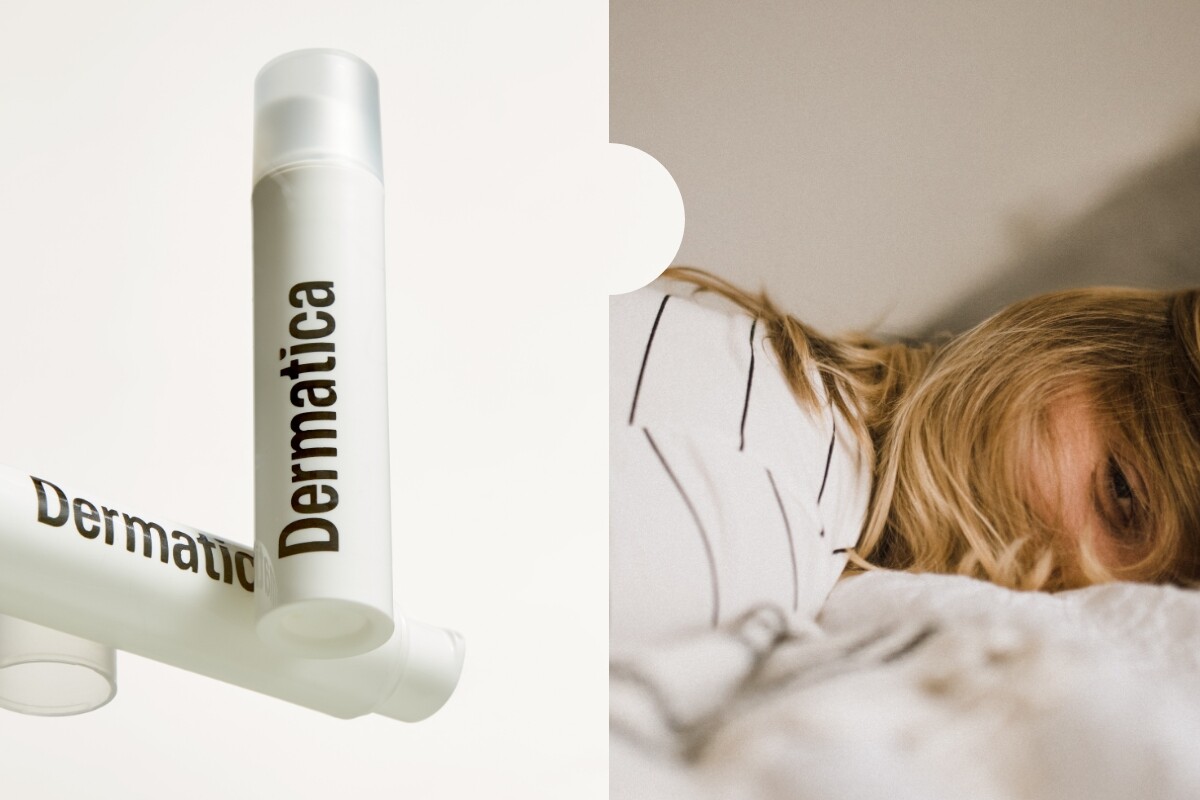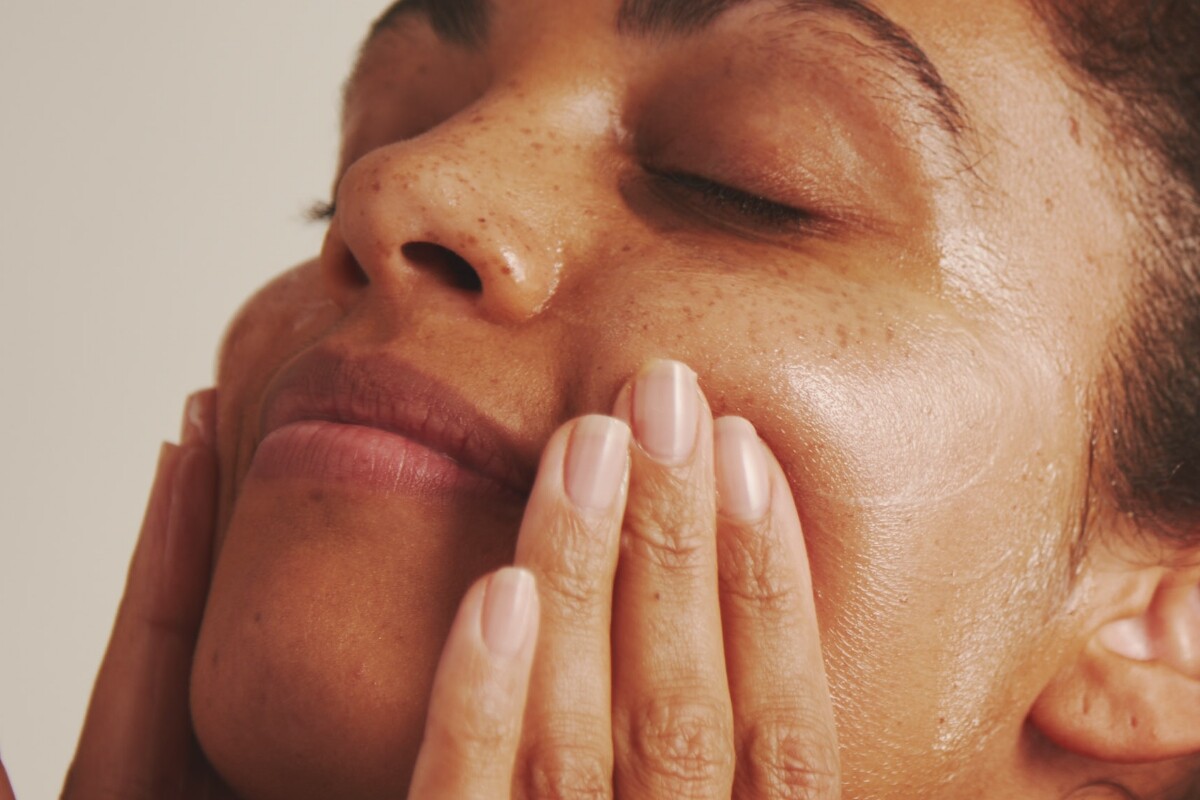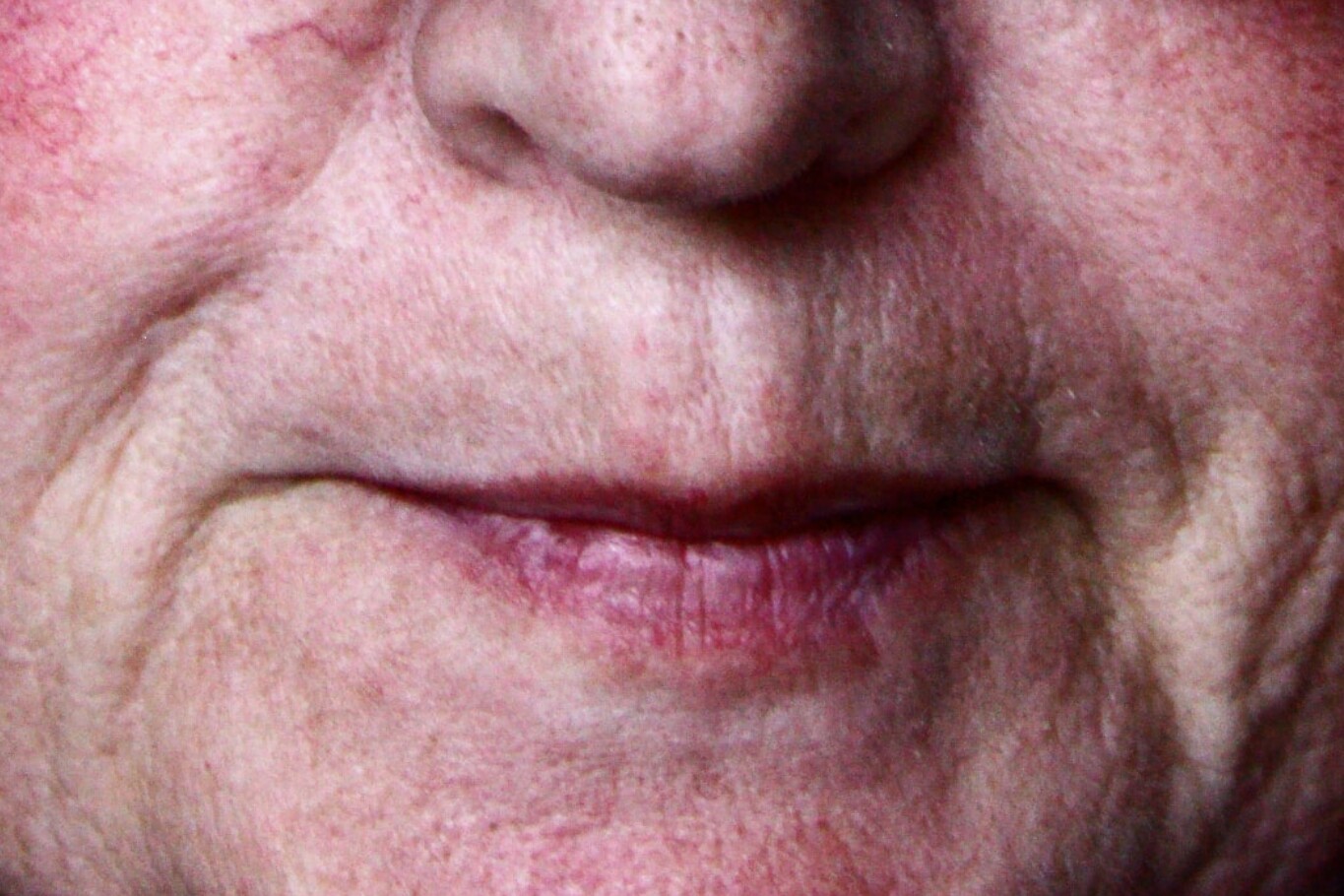If you have darker areas on your skin, you’re not alone. Hyperpigmentation is a common skin condition that’s caused by increased melanin production and it can affect anyone. Read on to learn more about hyperpigmentation, what causes it, and our advice if you want to reduce it.
First things first, how can you tell if you have hyperpigmentation? Well, there’s no one way hyperpigmentation can show up — in fact, there are many different types, in lots of shapes, sizes and shades, so it may not always be easy to know which you have. Here are four common types, how they look, and why they appear.
Freckles
Freckles are probably the most recognised type of hyperpigmentation. They appear as small, dark spots, usually less than 5mm in size. They can be any colour darker than your natural skin tone, from light tan to deep brown.
Your genetics can make you more likely to develop freckles, so if you have them, you’ll probably have noticed them on your skin since childhood. They tend to come out during the sunny months and fade in winter when you’re younger, but as you grow up, they can become visible year-round. Anybody can have the freckle gene, but it’s much more common in people with fair skin — especially those with red hair. Some people only have a few, while others have many.
Freckles are caused by cells producing extra melanin in your skin, but unlike other types of pigmentation, they’re not actually a sign of sun damage. However, UV exposure can make them more visible, which is why they often appear during summer.
Melasma
Melasma is a common skin condition that’s identified by, darker patches of skin usually on the cheeks, forehead and upper lip. It’s often associated with hormonal changes, so it’s more common during pregnancy, or while taking the contraceptive pill or hormone replacement therapy — you may have even heard it described as a ‘pregnancy mask’.
UV light is the main trigger for melasma, and continued exposure once you have it can exacerbate it. The pigmentation it causes is usually brown or grey, or simply darker than your natural skin tone.
Although we don’t know the precise cause of melasma, just like freckles, it can be more visible during summer, and less noticeable in winter. Learn more about melasma.
Sun spots and age spots
Sun spots, sometimes known as age spots or liver spots, are usually larger than freckles and appear in areas that get lots of sun, like your cheeks.
They’re the result of repeated sun exposure over many years (typically around 10-20 years) and are more likely to appear in people over 40, although you could see them earlier if you regularly use sunbeds, sunbathe, or don’t use enough sun protection.
Sun spots can be faded effectively with ingredients like hydroquinone and azelaic acid, but it’s still very important to protect your skin with regular applications of SPF 30-50 to prevent them returning or becoming more visible — and to keep you safe from UV damage, of course! You can find out more about getting the most from your sun protection here.
Post-inflammatory hyperpigmentation
Any inflammatory skin condition — which includes everything from active acne to bites and burns — can leave behind a pigmented area behind. This is post-inflammatory hyperpigmentation (PIH), and it’s caused by your body producing extra melanin as a result of injury or irritation.
The colour of PIH varies depending on your complexion. It tends to be more common in dark skin tones, appearing as brown or black patches, but in very fair skin types, it can be more red-toned.
Just like the other popular types of hyperpigmentation, PIH can be lightened significantly with effective skincare, and even faded away completely.
Here’s our dermatologist-approved guide to fading hyperpigmentation…
“The most important thing you can do to reduce the appearance of hyperpigmentation is using sunscreen. UV exposure can make affected areas look darker and cause further pigmentation. Apply a broad-spectrum sunscreen that protects against UVA and UVB with an SPF of 30+ daily, and remember to top it up at least every two hours.
Many powerful active ingredients are clinically proven to be effective at fading hyperpigmentation. Tretinoin is a prescription-strength retinoid that increases skin cell turnover, which helps to fade or even out areas of pigmentation. Azelaic acid is very effective at reducing both hyperpigmentation and acne, if you have that as well, while hydroquinone decreases melanin production in the skin. Some of these ingredients are only available with a prescription, but you can access one for free and find out the best treatment for you with our online consultation.
In rare cases, prescription-strength formulas may not be fully effective for you, and you may want to see a cosmetic practitioner to look into laser or chemical peel options. However, it’s always best and safest to start with a clinically proven topical treatment plan first.”
Want to know more about hyperpigmentation? Find more dermatologist-approved advice here.
New to Dermatica? Complete a free online consultation to start your skin journey today.
Dr Catriona Maybury
Dr Catriona Maybury is a Consultant Dermatologist, working as Medical Lead for Dermatica and at St George’s Hospital in London. Catriona completed her specialty training at St John’s Institute of Dermatology in London. Catriona has a special interest in medical dermatology, completing a PhD in liver fibrosis amongst psoriasis patients at King’s College London. Catriona is a certified coach and worked as Dermatology Section Editor for the British Medical Journal.




